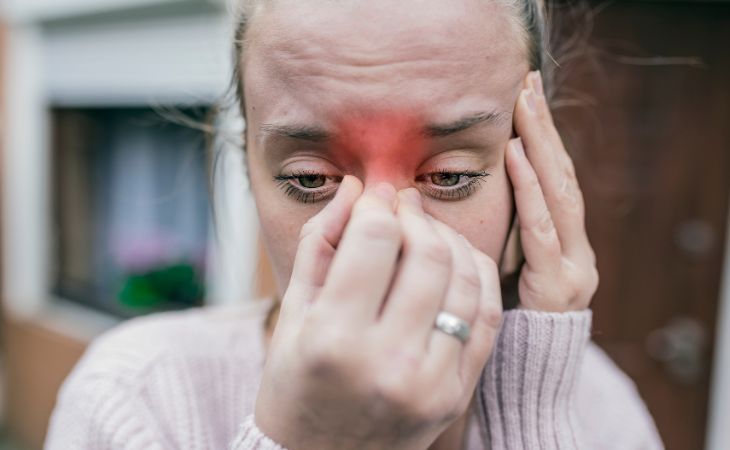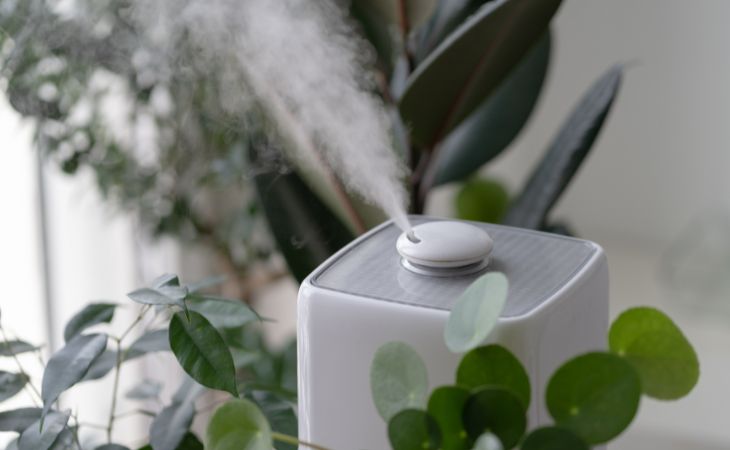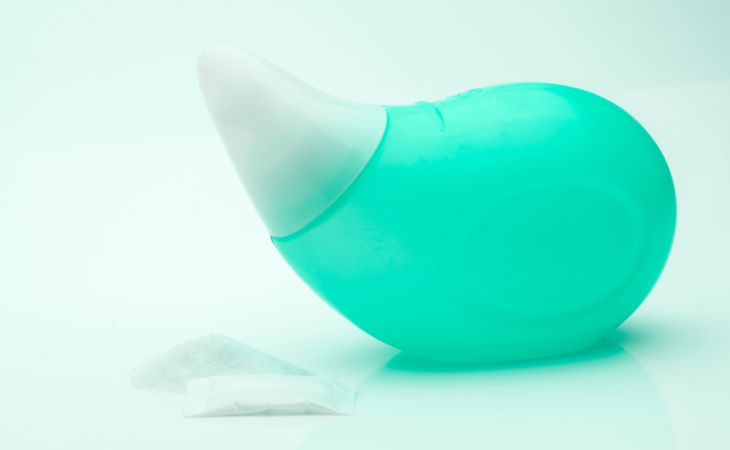What is a Sinusitis Headache?
A sinusitis headache occurs due to inflammation of the sinuses, which are cavities in the skull – around the nose and in the forehead and cheek areas. “The sinuses become inflamed when there is an infection or allergy that causes air, fluids, or mucus to become trapped inside, creating pressure that leads to pain in the forehead, cheeks, and teeth,” says Dr. Nishtan Redi, an ear, nose, and throat specialist from New Jersey who is an expert on sinuses.

You may mistakenly think that what you have is a migraine, and indeed it can cause quite similar symptoms, including a stuffy or runny nose, but the way you treat each one is completely different. Therefore, if you try to treat the pain with solutions that help migraines, you won’t get rid of it, and vice versa. “It is recommended to go to the doctor to be absolutely sure of the issue,” advises Dr. Redi. If it really is a sinus problem, you can try each of these methods separately or a few of them together – it won’t hurt. Use whatever you have available to achieve quick relief.
1. A Humidifier
“Humid air thins the mucus, which can become thick and sticky when the sinuses are inflamed,” says Dr. Redi. When the mucus is thin, the sinuses clear themselves with no problem, but when it becomes thick, it blocks their drainage pathways, causing a buildup of pressure that leads to pain. The moisture that a humidifier adds to the air you breathe helps to thin the mucus and aid its drainage, which reduces the pain you feel.
A study published in late 2021 showed that sinuses can effectively clear themselves when the humidity is at least 30%, but it’s even better at 45%. If you don’t have a humidifier at home, you can take a hot shower to the extent you can bear, and in general, expose your body to more moisture by drinking enough fluids (preferably a hot beverage, like tea or soup).

2. Nasal Saline Spray
Studies have shown that introducing saline solution into the nose can improve moisture in the sinus area and clean the nasal lining, as well as flush out allergens, dust, and thick mucus. “This cleaning helps to clear and open the sinuses, thereby reducing the pressure and pain,” explains Dr. Redi. Saline sprays do not contain any medications, and they’re safe to use as often as you like. They can be purchased at pharmacies without a prescription.
3. Nasal Irrigation
This is a similar solution to the previous one, except it involves a device that can also be purchased at the pharmacy or drugstore, which allows you to rinse your nose in a way that cleans the sinuses. It’s a small bottle shaped like a drop or a bulb, with a long spout that can introduce liquid into one nostril so it drains out the other, thoroughly cleansing the inside of your nose.
Dr. Redi recommends using the device with the following solution:
- Boil 230 ml of water for 5 minutes.
- When the water is lukewarm, mix it with ½ teaspoon of salt (non-iodized) and a pinch of baking soda.
Be sure to thoroughly clean the device after using it, and it’s a good idea to use it every day to regularly clean the sinuses and reduce the risk of inflammation.

4. Eucalyptus Essential Oil
Studies have shown that a compound called “eucalyptol,” found in eucalyptus oil, can reduce inflammation and pain, and can even help with sinusitis headaches. To use eucalyptus oil, place a few drops in a diffuser and inhale the fumes it releases, or simply place a few drops on a cotton ball and inhale its scent from there.
“The diffuser helps the compounds in eucalyptus oil reach deeper into the respiratory tract, which aids more,” says Dr. Jason M. Black, an allergy and immunology specialist from Las Vegas. You can also apply the oil to your skin and breathe it that way, for example on your chest or temples, but be sure to dilute it with a carrier oil first.
5. Alternate Hot and Cold Compresses
Dr. Redi recommends this method, as heat helps increase blood flow to the sinus area and reduce mucus thickness, while cold helps to dull the pain and reduce inflammation. Here’s how to do it:
- Start by placing a warm towel on your face for 3 minutes.
- After that, place a cold towel on your face for 30 seconds.
- Repeat this procedure two more times.
Repeat this treatment 4 times a day.
6. Spicy Foods
Those who love spicy food know that sometimes excessive spiciness can cause a runny nose. This is because spicy food contains a compound called capsaicin, which naturally clears the nose and encourages mucus production and drainage. “Those who suffer from headaches caused by sinusitis can eat spicy foods that will increase mucus and tear flow, thereby clearing the sinuses,” says Dr. Redi.

7. Vicks Ointment
You can find this ointment in natural stores, particularly in stores that sell products from India, and it has many uses, including preventing mosquito bites, relieving pain, and reducing symptoms associated with cough, mucus, and a runny nose. This ointment contains eucalyptus, and as mentioned, inhaling its compounds can help clear the sinuses, but it also contains menthol and camphor – two substances that act on certain receptors related to pain detection in the body.
What this ointment actually does is twofold – it reduces the pain and at the same time helps reduce the sinus congestion that causes the pain. Dr. Black recommends applying the ointment on the chest and covering the area with a warm towel. “The warmth can encourage the release of fumes from the ointment, which will increase the ability to inhale them.”
A Few Words in Conclusion
It doesn’t matter which method you choose from this list – it will only help and not harm. However, if your headache is not relieved by these home treatments, or if your symptoms worsen, it’s a good idea to see a doctor. They can offer you other and additional solutions, as well as medications that may be helpful for you. Do not be tempted to use nasal sprays intended to treat disease symptoms, as they might not be what will help you, and in general, they are not safe for long-term use. If you have a prescription for a nasal spray, use it for 3 days and no more (unless your doctor says otherwise), as it can cause symptoms to become more severe and chronic.




